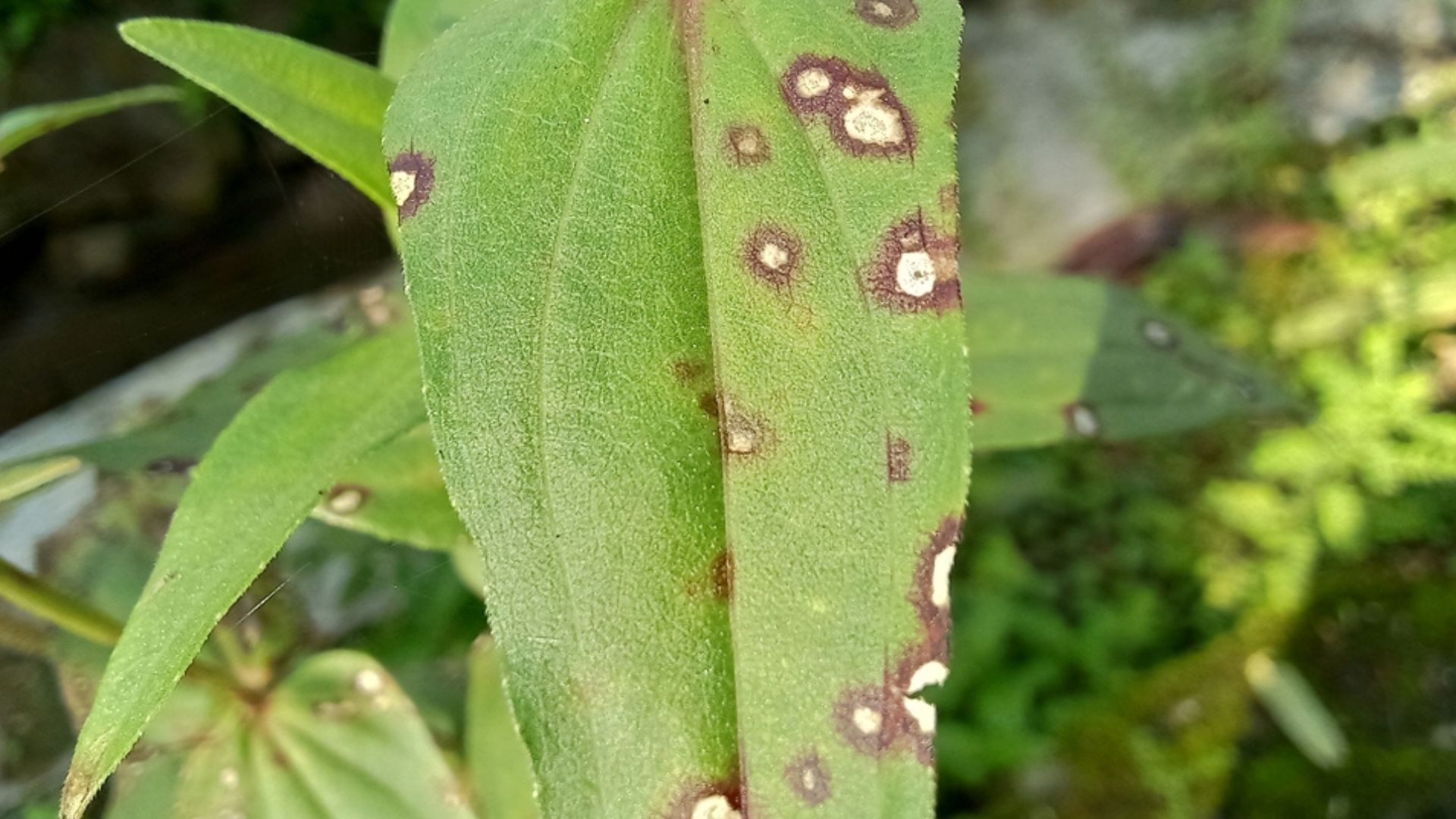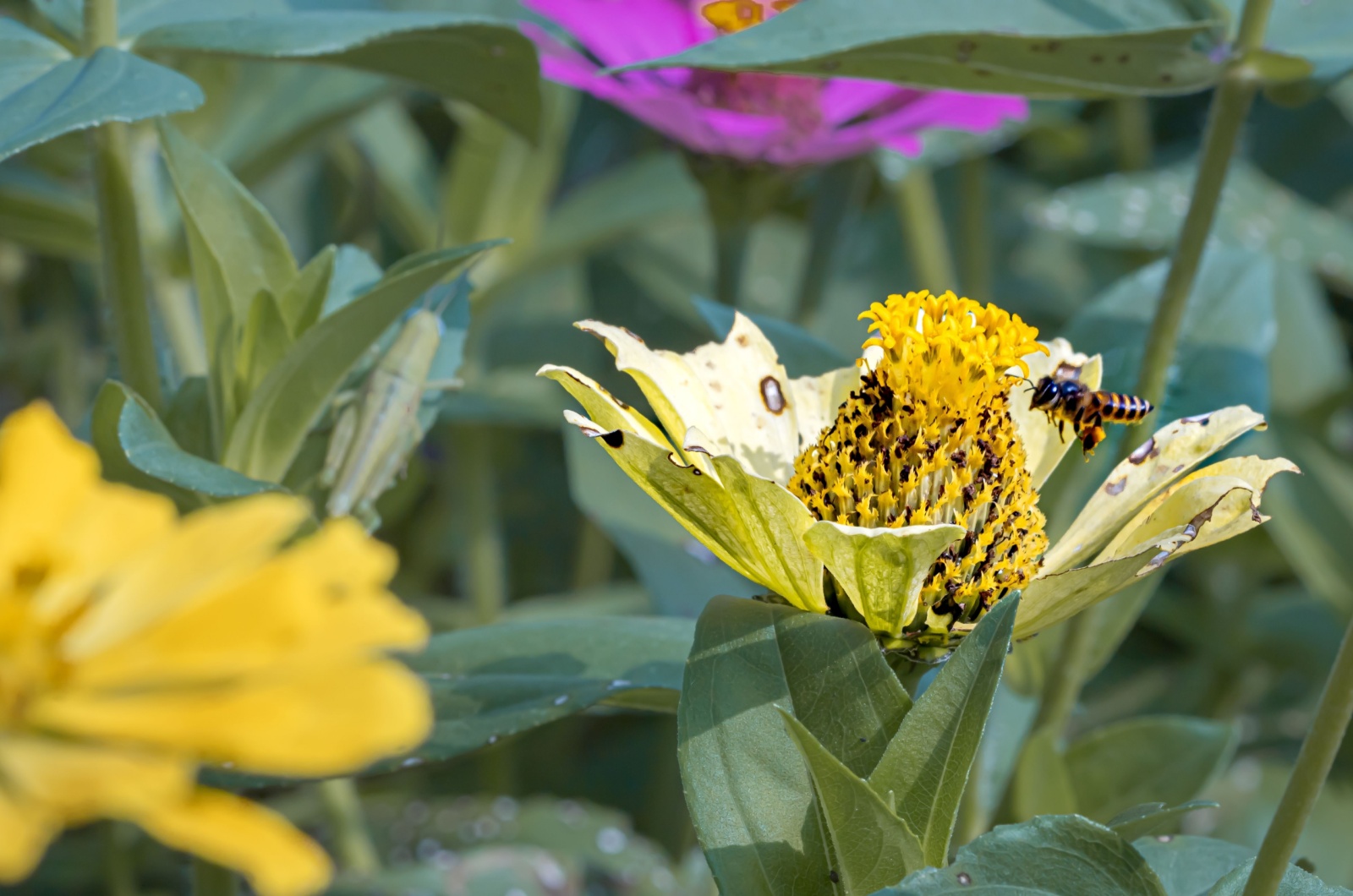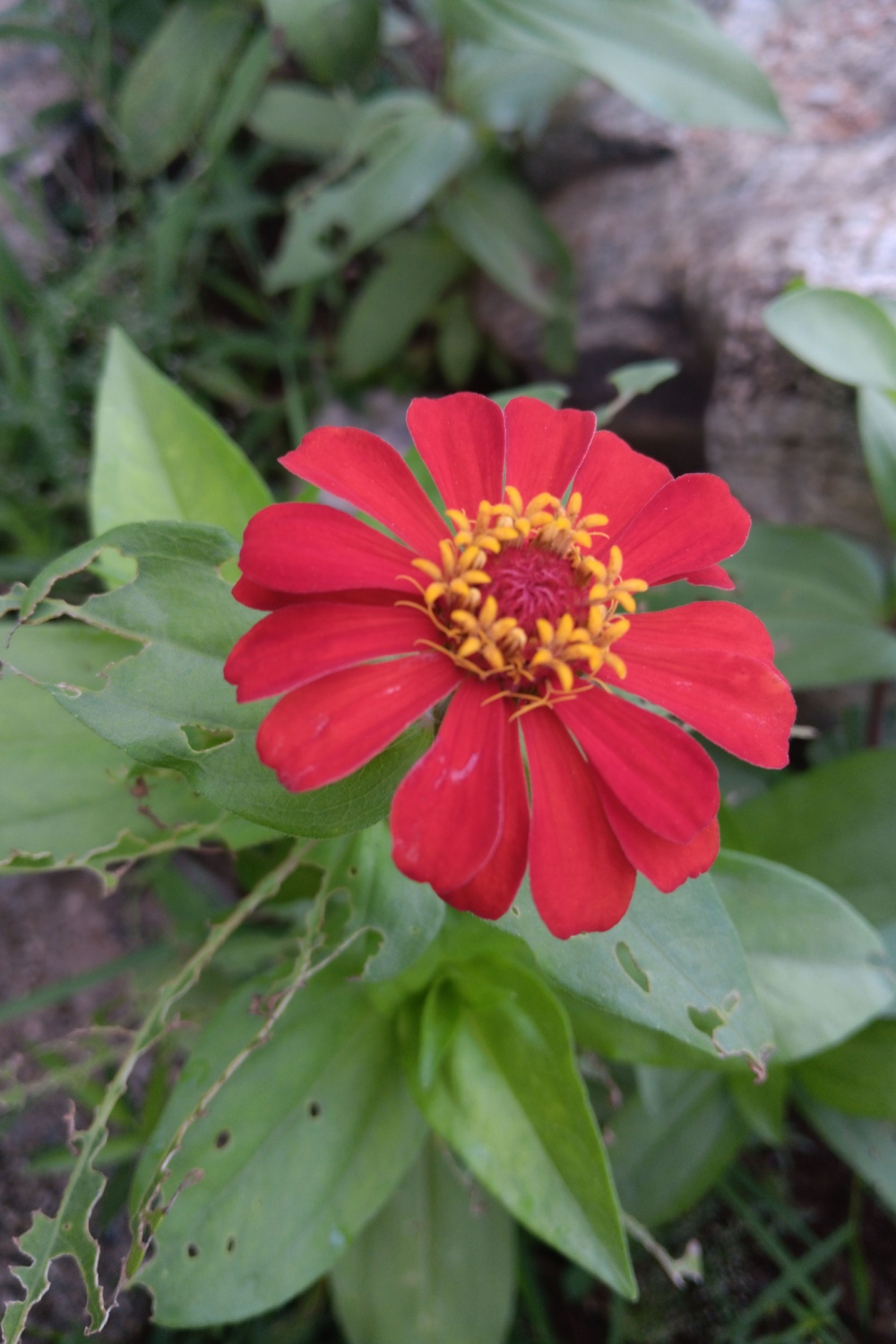Have you spotted rust-like marks on your zinnias and been worrying if something’s wrong? I had the same issue! I thought my zinnias were doing great until I noticed these spots.
Zinnias are so colorful and lively that any rust-colored spots with gray centers are hard to miss. Unfortunately, these marks are a sign of Alternaria leaf spot, which can seriously damage your plants.
I dug into how to tackle this issue and found the best solutions, and now my zinnias are thriving in full sunlight with no spots in sight!
Here’s what you have to do:
First, Identify The Symptoms
If your zinnia flowers have the disease, you’ll begin to notice symptoms such as reddish-brown spots that have white or grayish centers.
As these spots age, they become irregular and the leaves might turn dark brown or purple, eventually drying out. Things get worse as the center of these spots can fall out, leaving your zinnias with holes that cannot be fixed.
You might also see spots on the stems and even at the soil line, where black cankers form. Infected zinnias can end up wilting and drooping.
All of these are symptoms of this dreaded disease. Knowing what’s causing the problem is the first step to fixing it and getting your zinnias back to their blooming best!
Also read: Plant Zinnias At The Right Time Of Year And See Them Bloom Like Crazy
Then, Figure Out What Causes This Disease
When you spot the first symptoms, it’s time to get to the root of the problem (.i.e figuring out what is causing Alternaria).
When I first noticed these spots on my zinnias, I immediately tried to figure out what attracted this disease in the first place.
It turns out this fungus loves warm, damp conditions and spreads its spores through splashing water or the wind. And, of course, I didn’t realize that my zinnias were growing in exactly these conditions (plus the overcrowding!).
They looked perfectly fine at the first glance, but in reality, they were suffering.
Next, Use The Right Methods To Get Rid Of It
What’s a worried gardener to do? Find solutions and take action to save those plants!
While no zinnia is completely foolproof against Alternaria leaf spot, choosing disease-fighting varieties like Zinnia angustifolia can give you a head start.
I also tried spacing them about 4 to 24 inches apart (depending on the variety), and it helped a lot with the air circulation and humidity.
Another trick is to rotate your zinnia planting site every two years to keep the fungus from settling. Consider adding some zinnia companion plants nearby. For a bit of extra help, try fungicides like chlorothalonil, copper fungicides, or mancozeb.
Avoid overhead sprinklers, as they can help the fungus thrive. Instead, water your zinnias at the base to keep them dry. Also, make sure to dispose of infected plant parts properly (I burnt them, but you can seal them in a bag and throw them away).
Whatever you decide to do, just don’t compost them – the disease can linger and come back to haunt you!
These tricks really helped me keep my zinnia rust-free. Try them and share how they worked!
Also read: Grow This Herb Next To Zinnias And Watch The Wonders Happen



